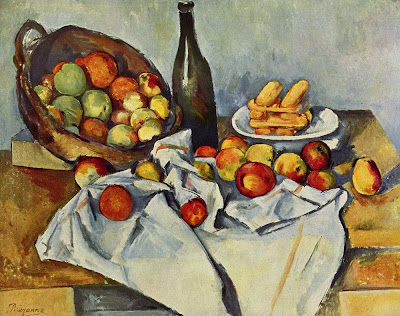"With an apple I will astonish Paris" - Paul Cezanne.
Cézanne demonstrates that still life—considered the lowliest genre of its day—could be a vehicle for faithfully representing the appearance of light and space. “Painting from nature is not copying the object,” he wrote, “it is realizing one’s sensations.”
He used planes of colour and small brushstrokes that build up to form complex fields. The paintings convey Cézanne's intense study of his subjects.
The Basket of Apples by Paul Cezanne is an 1893 still-life oil painting, popularly known for its disjointed point of view. The painting has been portrayed as an impartial composition for its unbalanced parts. It consists of a bottle at the center, an inclined basket with green and red-colored apples, a plate with stacked biscuits and a tablecloth with several apples which seem to have rolled from the inclined basket.
The disjointed perspective of the painting can be noted after examining it closely. Although Cezanne never aimed at illusionism in most of his paintings, in the Basket of Apples it seems as if he completed the piece using 2 different points of view. The right and left sides of the table are not in the same plane as if the table had split into two.
This is a technique which Cezanne used to integrate the distinction of viewpoints into an impressionistic still life. With this technique, Cezanne helped in bridging the gap between Cubism and Impressionism.













